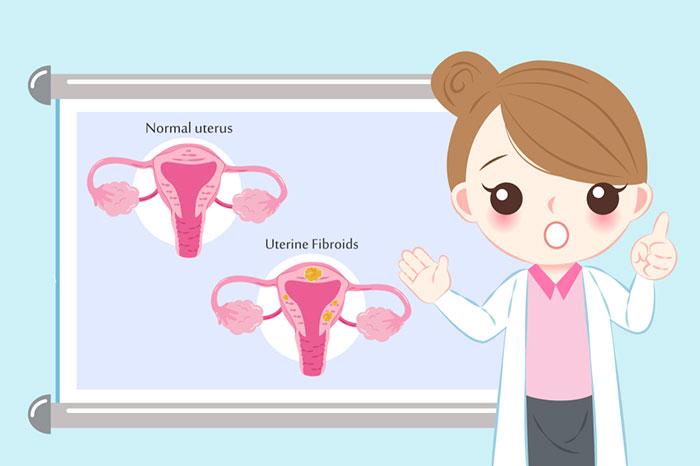
What is Uterine Fibroid?
Fibroid is a medical condition. It looks like a benign tumor and generally occurs in the muscle layer of the uterus. Fibroids are also called uterine fibroids, leiomyoma, etc. As of now, uterine fibroid has become one of the most common gynecological conditions. With women’s age, the changes for the development of uterine fibroids increase in them. Women, in their late reproductive period, before the onset of menopause, are more prone to develop uterine fibroids. Fibroids are non-cancerous tumors and are not life-threatening. However, they can complicate your pregnancy, if left untreated.
Causes of Uterine Fibroids:
The major cause of uterine fibroid is the imbalance in two hormones, namely, estrogen and progesterone. It usually occurs in women aged 30-40 years. There can be other possible causes for the development of uterine fibroids, such as Obesity and lack of exercise, genetic predisposition, late conception, excessive intake of white rice, pasta, white bread, sugar, lack of fiber, sedentary lifestyle, and that’s just the beginning.
Symptoms of Uterine Fibroids:
The most common symptoms of uterine fibroid include, but are not limited to heavy menstrual bleeding, prolonged and frequent menstrual period, pressure in pelvic area and heaviness in case of large fibroids, frequent urination, and inability to get pregnant.
Diagnosis of Uterine Fibroids
The condition of uterine fibroids can be diagnosed using the following examinations:
- Transabdominal ultrasound
- Computer and magnetic resonance imaging (CT, MRI)
- Blood test
- Hysteroscopy
Treatment for Uterine Fibroids
The answer to the question of how to treat uterine fibroids depends on its size, localization, and other characteristics of the disease and the state of the woman's body as a whole. Some of the most common forms of treatments include, but not limited to:
- Extremely big fibroids need surgical removal
- Certain medications can help reduce the size of the fibroids like Ulipristal, Mifepristone, etc.
- MRI guided focused ultrasound surgery
- Progestin releasing Intra-Uterine Device
- uterine artery embolization
Note that, if the size of a fibroid is very small with no symptoms, it may need no treatment at all.
